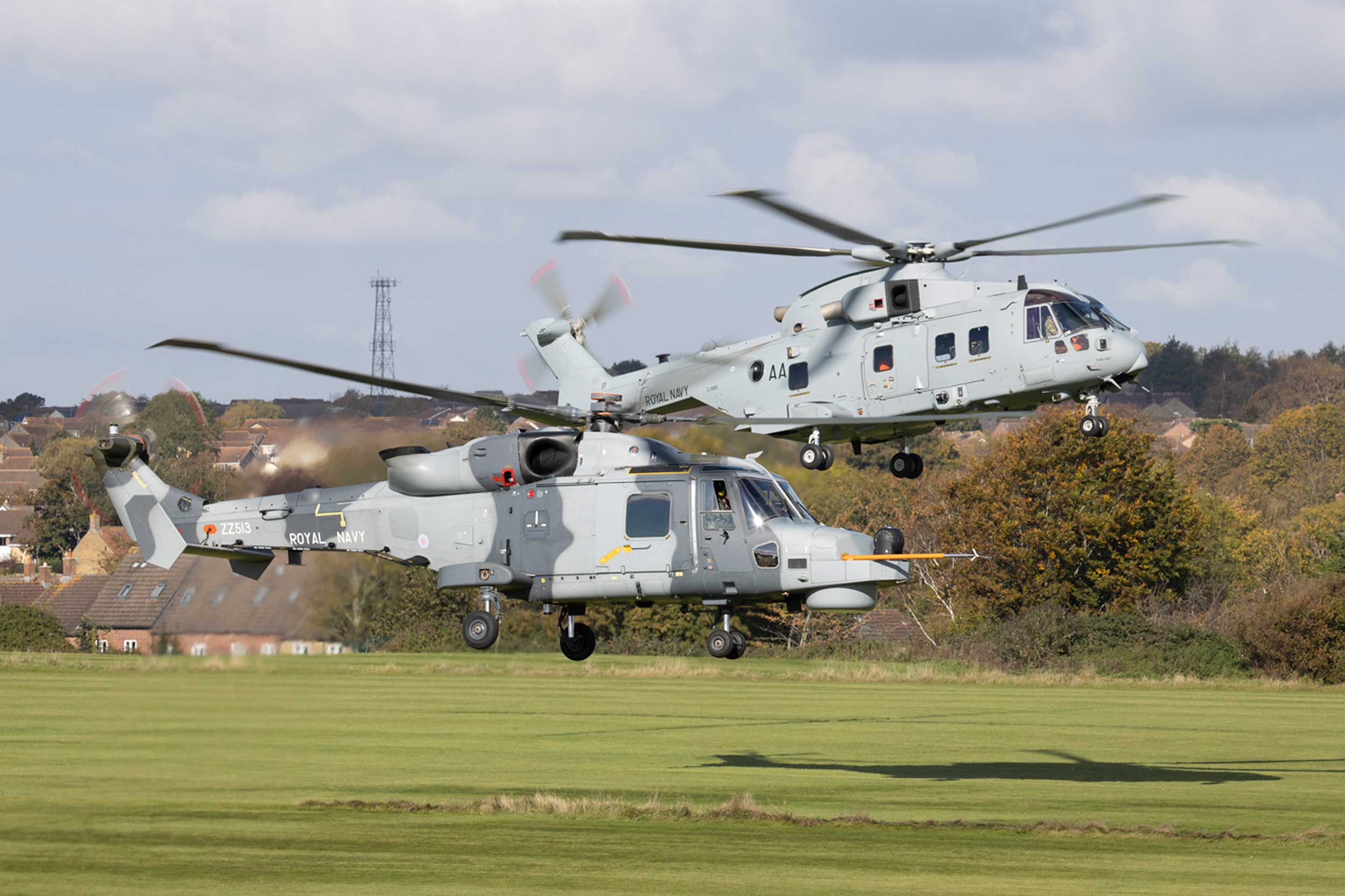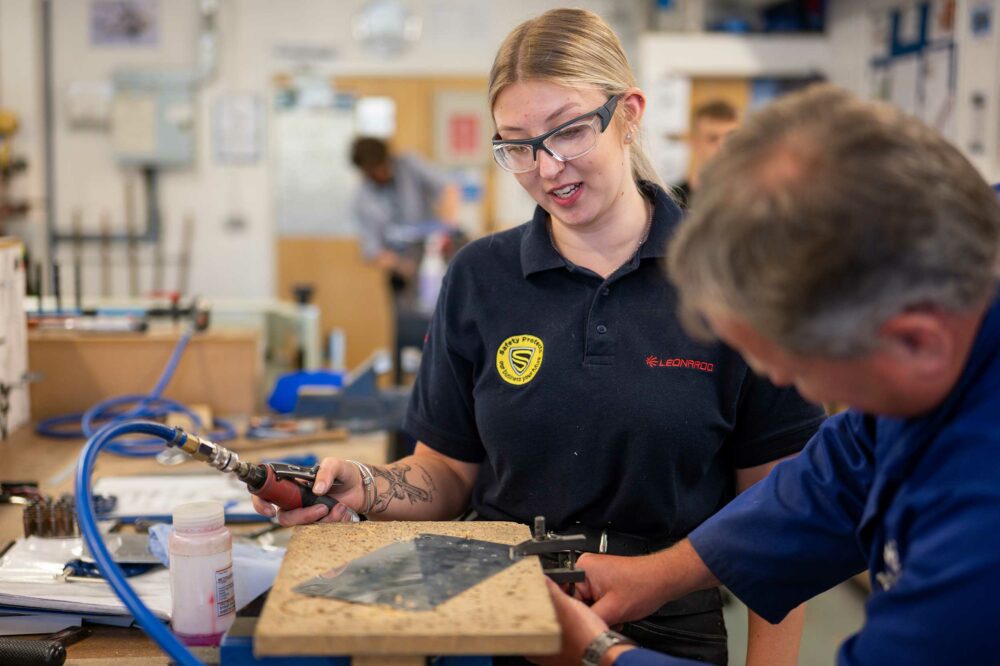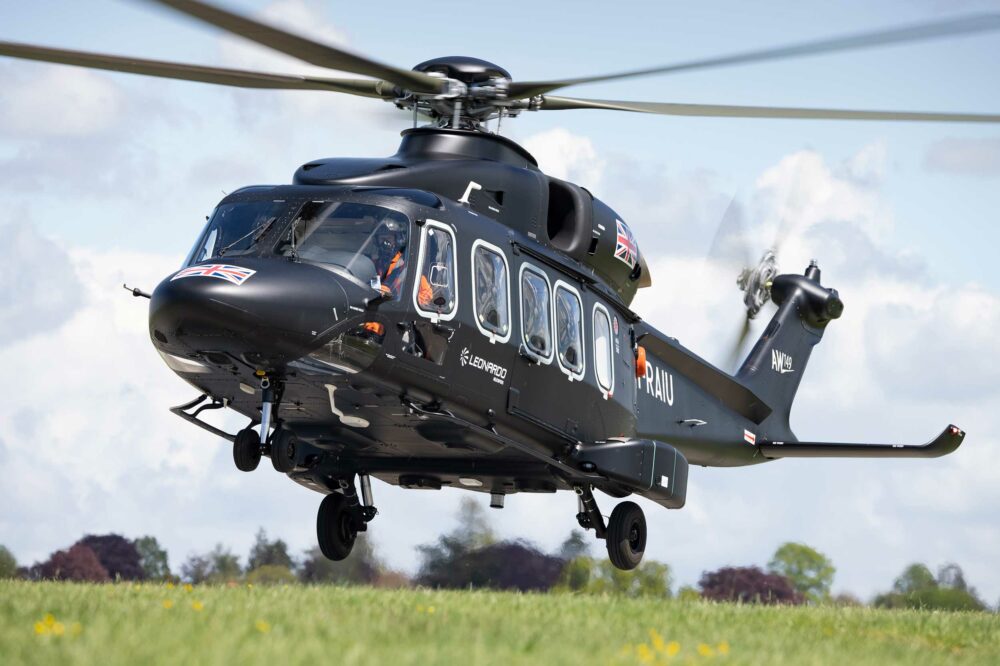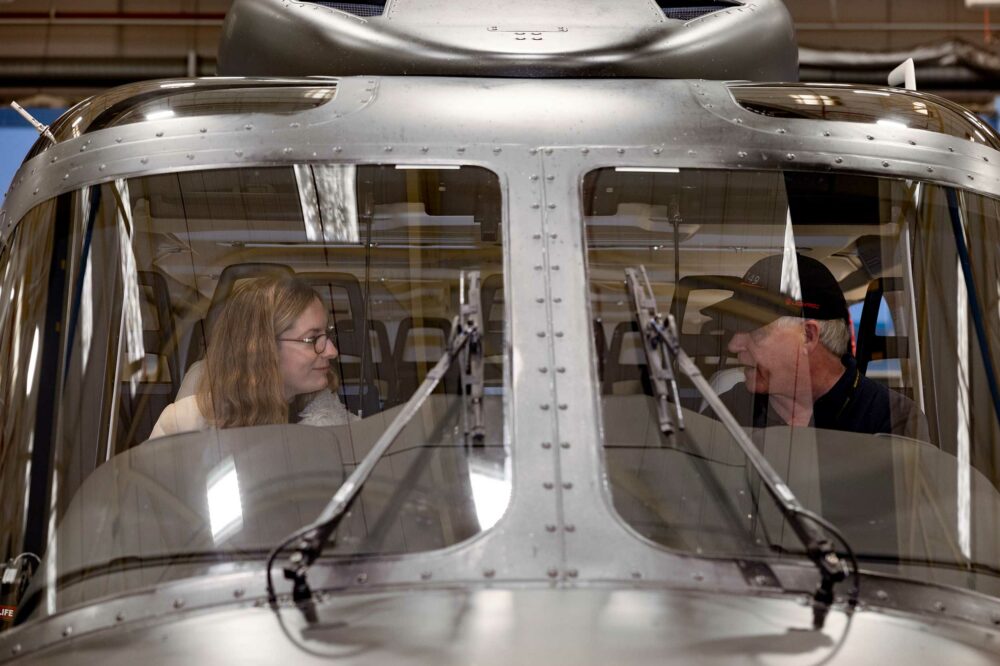I’m shown around the aircraft by Mark Hazzard, Senior Flight Test Engineer, who slides open the huge side doors and describes how easily the crashworthy seats can be reconfigured to suit different missions.
It’s roughly the same external footprint as the Bell 212, he explains, but it’ll comfortably carry up to 19 lightly equipped troops or 16 fully laden.
The fuselage is the same width as the three-engined AW101, which, at 16 tonnes, is twice its weight – so there’s enough room to carry stretchers side-on without having to shuffle them about.
With a useful payload of 3,800kg, it’s also handy for transporting cargo pallets, and there’s a rear luggage tunnel that can be fitted with an auxiliary tank to add an extra hour or so onto its five-hour endurance.
The AW149 is capable of carrying an underslung load of 2,800kg which, in British Army terms, means it’ll comfortably lift the 105mm Howitzer, plus a six-person gun crew in the cabin.
It’s quite high off the ground, which makes it safer when landing on unprepared surfaces. And it’s fast, with a maximum cruise of 155kt and VNE at 169kt. Pilots talk about how smooth the aircraft is at high speeds.
‘Survivability’ is a term you’ll see in a lot of the promotional material, for good reason. For a start, Exhaust Infrared Suppression helps it evade infrared missiles.
But perhaps even more impressive is the fact that the whole transmission system (not just the main gearbox) has a ‘run-dry’ time of a staggering 50 minutes at 100kt, meaning that total loss of gearbox oil is no longer a ‘land immediately’ or even ‘land as soon as possible’ situation.
In a military context that means more than just being able to get to an airfield or suitable landing site. It’ll keep going for long enough that, potentially, it could get you out of enemy territory.











